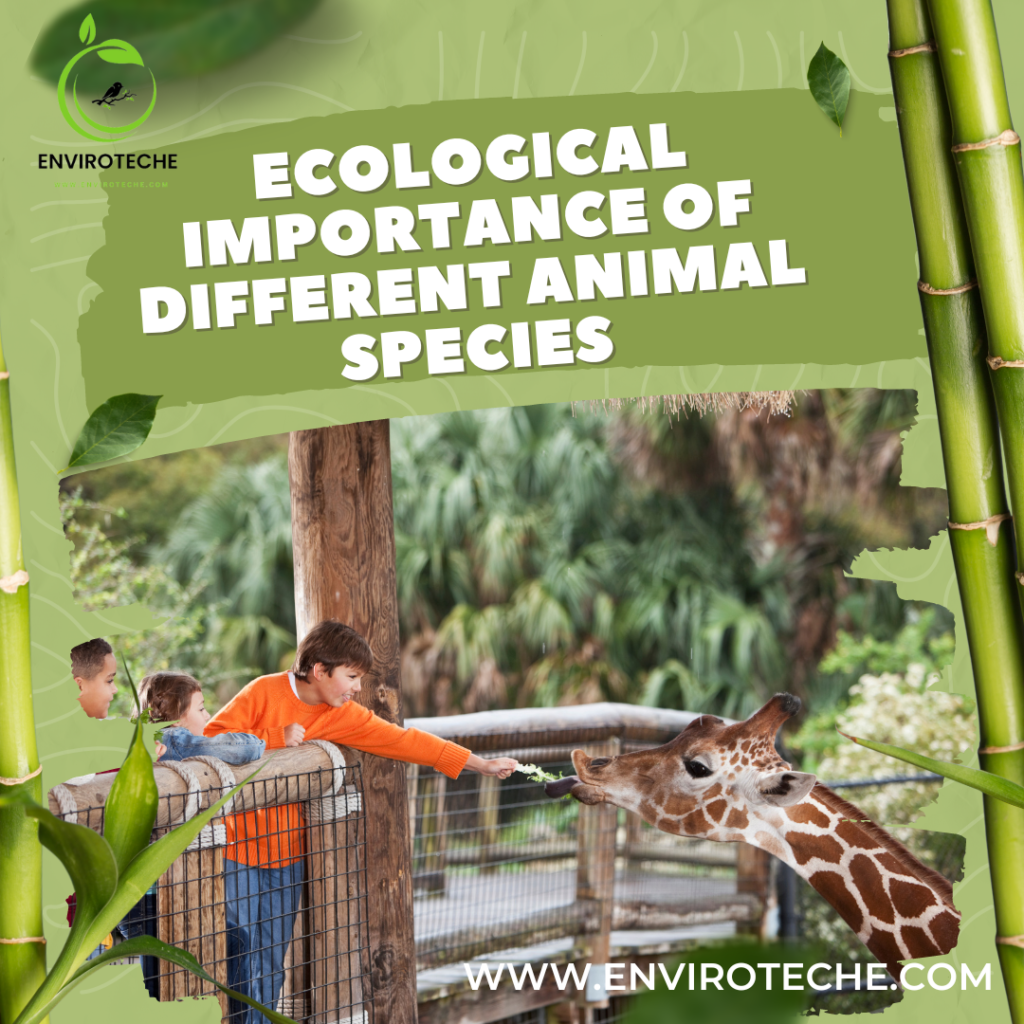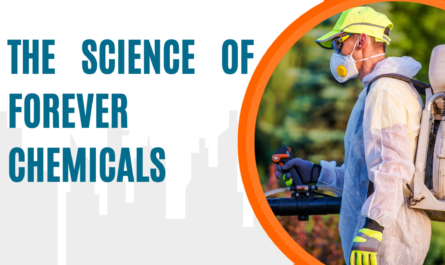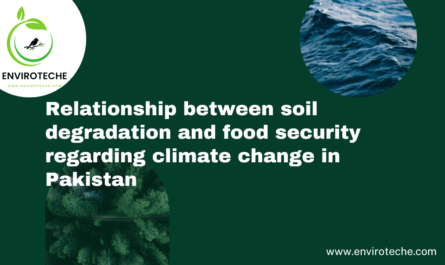
Animals are an essential component of the ecosystem because they fulfill a variety of functions that are essential to preserving the stability and balance of the ecological world. Animal species play a variety of roles in the ecosystem’s health, from pollination to decomposition. The ecological significance of different kinds of animals and the functions that they perform in the environment will be discussed in this blog.
Bees: Bees are some of the most vital pollinators on the planet. They are in charge of pollinating around 70% of all crops, including nuts, fruits, and vegetables around the planet. Without the bees, many of our favorite foods would start to become scarce and have a negative impact on the economy and environment. Bees are essential for pollination as well as the preservation of many ecosystems’ biodiversity (Greenleaf, S. S., & Kremen, C. (2006).
Bats: Bats are crucial to the sustainability of many ecosystems because of their important role in regulating insect populations. In actuality, a single bat has the capacity to eat as many as 1,000 insects in a single hour, which makes them a powerful organic pest management tool. Additionally, agave nectar which can be utilized to manufacture tequila is one of the numerous plants for which bats are crucial pollinators (Russo, D., Bosso, L., & Ancillotto, L. (2018).
Birds: Seed dissemination, the pollination process, and insect control depend on birds. They play crucial roles in many food networks as predators as well as prey. Birds have crucial ecological responsibilities, but they also contribute significant cultural and aesthetic qualities. Many species are prized for their splendor and musicianship (Whelan, C. J., Wenny, D. G., & Marquis, R. J. (2008).
Earthworms: When it comes to nutrient recycling and the breakdown of organic matter, earthworms are essential to the health of the soil. Earthworms assist to increase air circulation and drainage by building pathways in the soil, which makes it simpler for the roots of plants to absorb water and nutrients (Sander, T., & Gerke, H. H. (2009).
Sharks: Sharks are the primary predators in a number of ocean habitats, controlling the number of individuals of their prey species and preserving the hierarchy of food chains. Unlike sharks, other predator species might grow overpopulated and consume too many other species, eventually causing an ecosystem to fall apart (Afonso, P., McGinty, N., & Machete, M. (2014).
Sea otters: In some coastal habitats, sea otters are keystone species that are essential to the survival of kelp forests. Sea otters graze on urchins from the sea, which consume kelp, which helps to keep the number of sea urchins under control and promotes the growth of kelp forests. Many various species, especially invertebrates, and fish, rely on kelp forests as crucial habitats (Estes, J. A., Burdin, A., & Doak, D. F. (2016).
Elephants: Elephants play a crucial part in savannah ecosystem health maintenance and are significant ecosystem managers. Elephants contribute to preventing the overabundance and invasion of grasslands by eating shrubs and trees. As a result, the ecology can be made more diverse and grasslands can grow more abundantly, supporting a larger number of grazers (Van Wilgen, B. W., & Biggs, H. C. (2011).
Wolves: In many ecosystems, wolves are the top predators and are essential in controlling the number of populations of the prey species they consume. Wolves prevent excessive grazing, which can result in desertification and ecosystem collapse, by regulating herbivore populations. By regulating the number of populations of smaller predators, wolves also contribute to maintaining the stability of the food chain (Ripple et al., (2014).
Pollinators: Important pollinators include honeybees, butterflies, and a variety of insects. They support the growth of plants, and this is crucial for preserving our ecosystem’s biodiversity. Numerous species of plants would go extinct in the absence of pollinators, which could have a negative effect on the food chain as a whole (Dylewski, Ł., Maćkowiak, Ł., & Banaszak‐Cibicka, W. (2019).
Predators: The number of individuals of other species is significantly regulated by predators. They aid in reducing the number of herbivores that may otherwise overgraze and harm the ecology (Ruscoe, et al., (2011)… For instance, wolves support the management of the deer and elk populations in the national park of Yellowstone.
Decomposers: Bacteria, fungi, and worms, among other decomposers, aid in the breakdown of decaying material and the recycling of nutrients into the soil. They are crucial in preserving the soil’s fertility rates, which is necessary for plant growth (Domínguez, J., Aira, M., & Gómez-Brandón, M. (2010).
Seed dispersers: Animals like bats, birds, and other creatures aid in seed dissemination, which is crucial for the development of new plants. By distributing seeds to new locations and assisting in the colonization of new habitats, they contribute to sustaining the natural diversity of our ecosystem (Mello et al., (2011).
Keystone species: The keystone species are the ones that have an ecosystemic influence that is significantly greater than their relative abundance. For instance, sea otters are regarded as a keystone species in kelp forests as a result of their assistance in regulating the proliferation of sea urchins, which would otherwise be capable of destroying the forest of kelp Fisher, C. K., & Mehta, P. (2014).
Indicator species: Species considered indicator species are those that’s the presence or absence indicates how well an ecosystem is doing. Frogs and salamanders, for instance, are regarded as indicator species because of how sensitive they are to environmental changes like contamination and habitat loss Lindenmayer, D. B., Margules, C. R., & Botkin, D. B. (2000).
Cultural significance: There are numerous animal species that are important to human culture. They have a significant impact on our customs and beliefs and are an integral component of our cultural history. For instance, elephants are revered in various societies and play a significant role in religious rituals and celebrations Brown, D. E. (2004).
Conclusion
Different kinds of animals are essential to preserving the stability and equilibrium of the natural environment. Every kind has a certain function to perform in the environment, ranging from pollination to decomposition. All kinds of animals have various ecological functions, and by appreciating and comprehending this, we may fight to preserve and safeguard them for future generations.
References:
Greenleaf, S. S., & Kremen, C. (2006). Wild bees enhance honey bees’ pollination of hybrid sunflowers. Proceedings of the National Academy of Sciences, 103(37), 13890-13895.
Brown, D. E. (2004). Human universals, human nature & human culture. Daedalus, 133(4), 47-54.
Russo, D., Bosso, L., & Ancillotto, L. (2018). Novel perspectives on bat insectivory highlight the value of this ecosystem service in farmland: Research frontiers and management implications. Agriculture, Ecosystems & Environment, 266, 31-38.
Whelan, C. J., Wenny, D. G., & Marquis, R. J. (2008). Ecosystem services provided by birds. Annals of the New York academy of sciences, 1134(1), 25-60.
Sander, T., & Gerke, H. H. (2009). Modelling field data of preferential flow in paddy soil induced by earthworm burrows. Journal of contaminant hydrology, 104(1-4), 126-136.
Mello, M. A. R., Marquitti, F. M. D., Guimaraes Jr, P. R., Kalko, E. K. V., Jordano, P., & de Aguiar, M. A. M. (2011). The missing part of seed dispersal networks: structure and robustness of bat-fruit interactions. PLoS One, 6(2), e17395.
Afonso, P., McGinty, N., & Machete, M. (2014). Dynamics of whale shark occurrence at their fringe oceanic habitat. PLoS One, 9(7), e102060.
Estes, J. A., Burdin, A., & Doak, D. F. (2016). Sea otters, kelp forests, and the extinction of Steller’s sea cow. Proceedings of the National Academy of Sciences, 113(4), 880-885.
Van Wilgen, B. W., & Biggs, H. C. (2011). A critical assessment of adaptive ecosystem management in a large savanna protected area in South Africa. Biological Conservation, 144(4), 1179-1187.
Ripple, W. J., Estes, J. A., Beschta, R. L., Wilmers, C. C., Ritchie, E. G., Hebblewhite, M., … & Wirsing, A. J. (2014). Status and ecological effects of the world’s largest carnivores. Science, 343(6167), 1241484.
Dylewski, Ł., Maćkowiak, Ł., & Banaszak‐Cibicka, W. (2019). Are all urban green spaces a favourable habitat for pollinator communities? Bees, butterflies and hoverflies in different urban green areas. Ecological Entomology, 44(5), 678-689.
Ruscoe, W. A., Ramsey, D. S., Pech, R. P., Sweetapple, P. J., Yockney, I., Barron, M. C., … & Duncan, R. P. (2011). Unexpected consequences of control: competitive vs. predator release in a four‐species assemblage of invasive mammals. Ecology Letters, 14(10), 1035-1042.
Domínguez, J., Aira, M., & Gómez-Brandón, M. (2010). Vermicomposting: earthworms enhance the work of microbes. Microbes at work: from wastes to resources, 93-114.
Fisher, C. K., & Mehta, P. (2014). Identifying keystone species in the human gut microbiome from metagenomic timeseries using sparse linear regression. PloS one, 9(7), e102451.
Lindenmayer, D. B., Margules, C. R., & Botkin, D. B. (2000). Indicators of biodiversity for ecologically sustainable forest management. Conservation biology, 14(4), 941-950.
About the authors:
Nimra Ather1, Muhammad Qasim2
1Department of Zoology, University of Agricultural Faisalabad
2Department of Environmental Sciences, Government College University Faisalabad
Check Other Schlorships:

